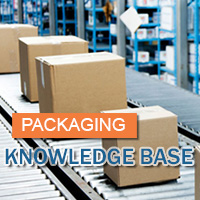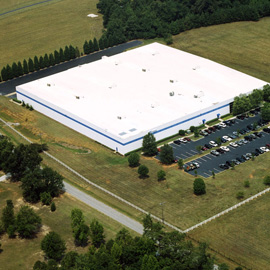The face-off: water activated tape versus pressure sensitive tape
Which is the better of the two tapes: water-activated tape (WAT) or pressure sensitive tapes (PST)?

We sought out the industry-leading brains, SGS North America (SGS), to both define and create test protocols to test the differences between water activated tapes and pressure sensitive tapes. The results of the study may surprise you.
The focus of the tests centered on four main criteria:
- Productivity measurements
- Material usage
- Tape integrity (withstandingthree varying climatic conditions)
- Adhesion strength
SGS Test Highlights:
- Productivity - Carton sealing productivity is 21% higher using a water-activated tape dispenser and WAT vs a hand-held tape gun with PST.
- Material Usage - The average amount of tape needed to seal a single carton using WAT was 8% less than using PST.
- Tape Integrity - In each climate setting, cartons sealed with WAT remained intact and prevented tampering; cartons sealed with PST were not secure and were easily accessed without revealing any signs of tampering.
- Adhesion Strength - This test was designed to assess how well WAT versus PST adheres, or bonds, to cartons. The test results demonstrated WAT's noteworthy bonding ability. When the WAT was removed from cartons, it also removed 80% of the carton's fibers. PST bonded poorly and was easily removed from the carton without showing any evidence of the tape's removal.
Materials used in the study:
- Corrugated cartons size: 18" x 12" x 14"
- Better Packages WAT KRM450-10 Tape
- Scotch Plastic Tape 3M 371
- Better Pack 555eS Tape Dispenser
- Tape Gun with 2" wide tape
Carton sealing productivity is 21% higher using a water-activated tape dispenser and WAT vs a hand-held tape gun with PST.
Water Activated Tape vs. Pressure Sensitive Tapes
Test 1: Productivity
The objective of the first test was to assess how many cartons could be sealed in a six hour work day using water activated tape versus pressure sensitive tape.
To test this objective, the top and bottom carton flaps were sealed with a single piece of tape long enough to overlay the side of the carton to secure functionality. Water activated tape had a 3" overhang; pressure sensitive tape had a 4" overhang.
Results:
PST: 535 cartons were sealed in the six hour time frame, equaling approximately 89.2 cartons sealed per hour.
WAT: 649 cartons were sealed in the six hour time frame, equaling approximately 108.2 per hour. Productivity Increase with WAT? 21%
Conclusion: Productivity using a water-activated tape dispenser and water activated tapes is 21% higher than using a hand-held dispenser with pressure sensitive tape.
Test 2: Carton Sealing Material Used
This test used the information in the above test to calculate the amount of tape to seal a carton using water activated tape versus pressure sensitive tape.
Results:
PST: The amount of tape used per carton equaled approximately 51.5".
WAT: The amount of tape used per carton equaled approximately 47.2", thus saving approximately 8%.
Conclusion: The average tape needed to seal a single carton using water activated tape is approximately 8% LESS than using a pressure sensitive tape.
Test 3: Integrity Testing
The objective of this test was to take twenty cartons, ten sealed with water activated tape, the other ten sealed with pressure sensitive tape, and through the use of an Instron test machine, record the amount of pressure required to either open the carton where it is sealed, or tear the tape, or break the carton. Each of the cartons were tested in three differing conditions:
- Standard Atmosphere - 73.4F with relative humidity 50%
- Tropical Atmosphere - 104F with relative humidity 75%
- Arctic Atmosphere - .4F with humidity less than 10%
Results:
PST: The maximum force needed to open the carton was 16.8 lbs, which could easily be forced by an average person.
WAT: The force needed to cause the cartons to break was 60 lbs.
Conclusion: The WAT held up against the varying temperature and humidity test environments, and provided a reliable seal to prevent tampering.
Test 4: Adhesion Testing
The objective of this test was to see how well the water activated tape versus the pressure sensitive tape would adhere to the carton after setting for 5 seconds in one test and after setting 24 hours in another test. The procedure for this test included testing four cartons sealed with water activated tape and 4 cartons sealed with pressure sensitive tape, and then removing the tape by hand from the cartons. In each case - the 5 second test and the 24 hour test, the tape was pulled off, and the surface carton material that was pulled off with the tape was measured.
Results:
Paper Tape: After 5 seconds, the paper tape still had noticeable tackiness. After 24 hours, when the paper tape was removed, approximately 80% of the area where the tape was adhered, the carton fibers came off with the tape.
Plastic Tape: After 5 seconds, the plastic tape did not exhibit tackiness, and worse still, after 24 hours, the tape was removed easily, capturing only a small portion of the cardboard fibers with it.
Concluding thoughts: If you're looking for a reliable, secure, tamperproof, versatile carton sealingtape, the overwhelming evidence points in the direction ofwater activated carton sealing tape.




